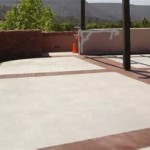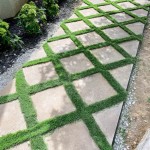How Much Does a Concrete Patio Slab Cost Per Square Foot?
Determining the cost of a concrete patio slab involves a multifaceted analysis, considering various factors that can significantly influence the overall price. Understanding these elements is crucial for budgeting accurately and making informed decisions about patio construction projects. The price per square foot is not a fixed figure; it fluctuates based on location, material choices, labor rates, and the complexity of the installation.
This article aims to provide a comprehensive overview of the cost factors associated with concrete patio slabs, offering insights into material expenses, labor costs, site preparation requirements, and additional considerations that can impact the final price. It will delve into the intricacies of each element, allowing readers to gain a clear understanding of the potential investment required for their concrete patio projects.
Material Costs: Cement, Aggregates, and Additives
The foundation of any concrete patio slab is the concrete mixture itself. The cost of this mixture is determined by several components, including cement, aggregates (sand and gravel), and any additives used to enhance its properties. Cement prices are subject to market fluctuations, influenced by demand, manufacturing costs, and transportation expenses. Similarly, the cost of aggregates can vary depending on their availability and the proximity of the supply source to the project site.
Different types of cement are available, each with varying price points. Ordinary Portland cement (OPC) is the most commonly used and typically the most economical. However, specialized cements, such as sulfate-resistant cement or rapid-hardening cement, may be required for specific applications or environmental conditions, potentially increasing material costs.
The ratio of cement to aggregates also plays a role in the overall cost. A richer mix, with a higher proportion of cement, will result in a stronger and more durable concrete slab but will also be more expensive. Conversely, a leaner mix, with a lower proportion of cement, will be less costly but may compromise the slab's long-term performance.
Additives are often incorporated into the concrete mix to improve its workability, durability, and resistance to cracking. These additives can include air-entraining agents, water reducers, and fiber reinforcement. While additives can enhance the quality of the concrete, they also contribute to the overall material cost. The specific type and quantity of additives required will depend on the project's design and environmental conditions.
Stamped concrete, a popular option for patios, involves adding color hardeners and release agents to the concrete surface during the finishing process. These materials add to the overall cost but contribute significantly to the aesthetic appeal of the patio. The complexity of the stamping pattern and the number of colors used will further influence the price.
Concrete sealers are typically applied after the concrete has cured to protect it from staining, water damage, and wear. Sealers can be acrylic-based, epoxy-based, or polyurethane-based, each with varying costs and performance characteristics. The choice of sealer will depend on the desired level of protection and the expected traffic on the patio.
Labor Costs: Site Preparation, Pouring, and Finishing
Labor costs constitute a significant portion of the total expense of a concrete patio slab. These costs encompass site preparation, formwork installation, concrete pouring, finishing, and any necessary cleanup. The complexity of the project, the size of the patio, and the skill level of the contractors involved all influence labor rates.
Site preparation is a crucial step that involves clearing the area, excavating to the required depth, and compacting the subgrade. This process ensures a stable foundation for the concrete slab. The amount of site preparation required will depend on the existing ground conditions and the desired level of precision. If the existing soil is unstable or contains organic matter, additional excavation and soil stabilization may be necessary, increasing labor costs.
Formwork is essential for containing the concrete during the pouring process and shaping the slab to the desired dimensions. The formwork can be constructed from wood, metal, or plastic, each with varying costs and ease of use. The complexity of the patio design, including any curves or angles, will impact the time and materials required for formwork installation.
The concrete pouring process involves delivering the concrete to the site and distributing it evenly within the formwork. This task requires specialized equipment, such as concrete pumps or wheelbarrows, and skilled labor to ensure proper placement and consolidation. The size of the patio and the accessibility of the site will influence the efficiency of the pouring process.
Concrete finishing is a critical step that determines the final appearance and texture of the patio surface. This process involves leveling the concrete, creating a smooth surface, and adding any desired finishes, such as broom finishes, exposed aggregate finishes, or stamped patterns. Skilled finishers are essential for achieving a high-quality result. Stamped concrete requires specialized finishing techniques, which can increase labor costs.
The prevailing labor rates in the region will also significantly impact the overall cost of the project. Areas with a high cost of living typically have higher labor rates than areas with a lower cost of living. Furthermore, the experience and reputation of the contractors involved can influence their pricing. More experienced and reputable contractors may charge higher rates but offer greater assurance of quality and reliability.
Additional Factors Influencing Costs: Permits, Accessibility, and Design Complexity
Beyond the basic material and labor costs, several other factors can contribute to the overall expense of a concrete patio slab. These factors include permits, site accessibility, and the complexity of the patio design.
Building permits are often required for concrete patio installations, particularly for larger projects or those located in areas with strict zoning regulations. The cost of permits can vary significantly depending on the municipality and the scope of the project. Obtaining the necessary permits is essential to ensure compliance with local building codes and avoid potential fines or penalties.
Site accessibility can also impact the cost of the project. If the site is difficult to access, it may require additional labor and equipment to transport materials and equipment to the work area. Steep slopes, narrow pathways, or the presence of obstacles can all complicate the construction process and increase costs.
The complexity of the patio design is a significant factor in determining the overall cost. Simple, rectangular patios are typically less expensive to construct than more elaborate designs with curves, angles, or multiple levels. Custom designs may require more intricate formwork and finishing techniques, increasing both material and labor costs.
The presence of underground utilities, such as gas lines, water pipes, or electrical conduits, can also add to the cost of the project. Identifying and protecting these utilities during excavation is essential to prevent damage and ensure safety. Utility relocation may be necessary if the patio design conflicts with existing underground infrastructure, adding further expense.
Similarly, addressing drainage issues can increase the cost. If the patio area is prone to water accumulation, proper drainage solutions, such as French drains or surface grading, may be required to prevent water damage and ensure the longevity of the slab. Poor drainage can lead to cracking, erosion, and other problems, so addressing these issues proactively is essential.
Finally, unexpected complications, such as unforeseen soil conditions or weather delays, can also impact the final cost of the project. It is prudent to budget for contingencies to cover any unforeseen expenses that may arise during construction. Having a financial cushion can help mitigate the impact of unexpected problems and ensure that the project stays on track.
In summary, determining the cost of a concrete patio slab requires a thorough assessment of various factors, including material expenses, labor costs, site preparation requirements, permits, accessibility, design complexity, and potential unforeseen complications. By carefully considering each of these elements, property owners can develop a realistic budget and make informed decisions about their patio construction projects. Obtaining multiple quotes from reputable contractors and carefully reviewing the scope of work can help ensure a fair price and a satisfactory outcome.

How Much Does A Concrete Slab Cost

How Much Does A Concrete Patio Cost 2025 Data Angi

Guide How Much Does Stamped Concrete Cost

How Much Does It Cost To Build A Patio 2025 Data

How Much Does A Concrete Patio Cost 2025

How Much Does A 30x30 Concrete Slab Cost Important Factors

How Much Does A Concrete Patio Cost 2025

How Much Does A 20x20 Concrete Slab Cost Important Factors

What Is The Cost Of A Concrete Slab In

Guide How Much Does A Concrete Patio Cost








